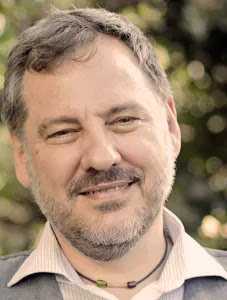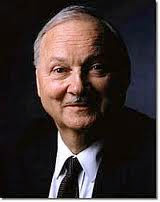Is Civil Society arguing itself out of political space?
 As some of you will know I have a new book out Stakeholder Democracy: Represented Democracy in a Time of Fear. (other contributors to the book were: Jan-Gustav Strandenaes, Carolina Duque Chopitea, Minu Hemmati, Susanne Salz, Bernd Lakemeier, Laura Schmitz, and Jana Borkenhagen). This article is now on Inter Press Service News Agency here.
As some of you will know I have a new book out Stakeholder Democracy: Represented Democracy in a Time of Fear. (other contributors to the book were: Jan-Gustav Strandenaes, Carolina Duque Chopitea, Minu Hemmati, Susanne Salz, Bernd Lakemeier, Laura Schmitz, and Jana Borkenhagen). This article is now on Inter Press Service News Agency here. The book’s theory of change is very simple involving stakeholders in the decision making makes better-informed decisions and that those decisions are more likely to be implemented with those stakeholder’s support either singularly or in partnership.
The book places Stakeholder Democracy within the spectrum of Representative to Participatory Democracy.
It argues that we need to strengthen represented democracy in a time of fear through engaging stakeholders. It recognizes that in many places politicians are no longer believed but they need to make difficult decisions. To help them do this engaging with the support of stakeholders can help them to have the political courage to address climate change or the wave of new technologies coming or migration or the many other difficult issues we will be facing in the next ten years up to 2030.
Two discourses
Since around 1992 we have had two different political discourses in play that of stakeholders and that of civil society.
Under the leadership of Maurice Strong, Chip Lindner, and Nitin Desai the Earth Summit moved away from the old NGO discourse. Prior to 1992 the UN viewed that everyone who wasn’t a government or an intergovernmental organization was an NGO. In terms of accreditation that is still the same but in terms of how it plays out it is not.
It was the Earth Summit changed that. Agenda 21 recognized nine stakeholder groups in society who should be involved in policy development and in helping to deliver Agenda 21 and the Rio Conventions. These were:
- Women
- Children and Youth
- Indigenous Peoples
- Non-Governmental Organizations
- Local Authorities
- Workers and Trade Unions
- Business and Industry
- Scientific and Technological Community
- Farmers
At the same time in the World Social Summit (1995), the Financing for Development space (2002) and those around the Bretton Woods Institutions a different political discourse evolved that of civil society.
This discourse recognized only two different groups than government and intergovernmental bodies these two were industry and civil society. What did this mean?
Civil Society concept increases space for industry
We often hear in the civil society discourse of the increased space that industry has.
Well, the conceptual framework for civil society by its nature increases the space of industry from one of nine to one to two.
So let's be clear the advocates for the civil society discourse by their own actions are giving up massive space for industry and reducing space for other stakeholders.
This also allows governments and intergovernmental organizations to just group anyone who isn’t industry into a catch-all group. Except that it then also misses out key stakeholders.
Who is Civil Society?
Well, there are many definitions out there and the book looks at some of them. But what it tends to be is a space dominated by NGOs…it does subjugate women, youth, community groups, etc into this one space no longer having their individual and unique voices.
By doing this it dilutes the gender perspective – it reduces the voice of the next generation.
Civil Society also excludes a number of key stakeholders that includes academics and scientists, Indigenous Peoples – they are a "Peoples" and should, of course, have not to be subjugated to other views. Often trade unions also aren't members of civil society and in some cases are in conflict with environmental NGOs over the time for a just transition.
Civil Society also excludes local and subnational government who is seen as a level of government but whose voices are seldom found with their national government. They also are where many of the policies are enacted and so their engagement in the SDGs is critical with something like 60% of the SDG targets being delivered at the local level.
The book goes into examples where this course has resulted in the wrong people being at the table.
The Stakeholder discourse, on the other hand, requires an ongoing stakeholder mapping process to ensure the right people are at the table.
It gives them individual space to articulate for a gender perspective or youth a next-generation perspective. It enables new relevant stakeholders that have emerged over the last 25 years to be recognized and given space such as older people or people with disabilities.
Civil Society discourse is a lazy discourse
What amazes me is how groups that do not benefit from the civil society discourse seem to accept it without question.
I can only think it is because its easier to administer than to argue for and listen to the individual voice of relevant stakeholders.
For governments and intergovernmental organizations, it definitely makes their life much easier.
They don’t have to show what they are doing for engaging each of the stakeholders they leave it to a broad engagement with this catch-all group of civil society.
What it has done in many UN bodies that have adopted this reduces the staff support for stakeholders and increase it for industry - a good example of this is UNEP under Erik.
After all, now intergovernmental bodies would only be servicing two groups... resulting in the need for only a form of parity between civil society support and industry. Previously there needed to be evidence of support for women, youth, Indigenous Peoples etc.
You can hear from some of those lazy people the comments like...
"ahh how do you decide which stakeholder group you should be a member of"
"
They go on to say "what if you are a woman and a young person and work for an NGO."
Well, the engagement isn't and shouldn't be based on the individual it's based on the organization in all cases. To be clear it should be based on what the organization's policy priorities are.
If the organization is focused on youth policies then it should engage with the youth caucus, if its work is gender then it should engage with the women’s stakeholder group and if it’s a mixture well work in a number of different stakeholder groups.
Who benefits from the Civil Society discourse?
I always like to look at who benefits to see if that has a bearing.
It's clear that there is a number that benefits.
Governments and Intergovernmental organizations benefit as they don’t have to address the different voices and leave that coordination to whoever is organizing the civil society group.
Industry benefits as they gain a huge additional space vacated by key stakeholders one of two is so much better than one of nine or more for them.
Also, large well organized northern-based NGOs benefit as they can assert a larger influence on one space than many.
So if you are happy with giving more space to industry, reducing space for women and youth and other key stakeholders, not recognizing Indigenous Peoples right for their own space, do not want academics and scientists to be able to represent their research then do continue to use the civil society concept but understand what you are doing.
You are actively taking part in reducing space for all other stakeholders.



Comments
Post a Comment